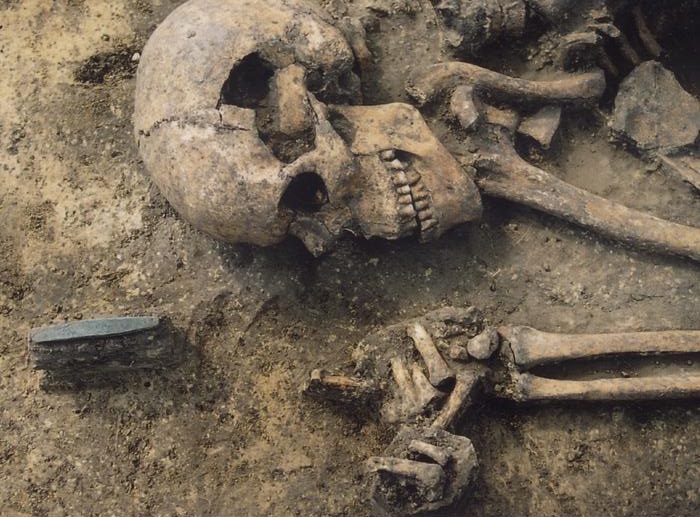Some Stone Age Societies Avoided Farming in a Rapidly Changing Europe
Posted on Categories Discover Magazine

A population group inside modern-day Ukraine avoided outside influence for about 4,000 years during the latter days of the Stone Age and delayed the transition from hunting and gathering to farming, a new study says.
Researchers from Uppsala University and elsewhere drew on genetic material of 56 people who lived at different times during the Stone Age, in central and eastern Europe. Experts were particularly interested in the introduction of farming to Europe, which occurred about 8,500 years ago. As Europeans mixed with early farmers from Anatolia (Asia Minor), their local genetic diversity spiked.
A Population in Ukraine
But the study found no such spike among people who lived along the lower Dnipro River, downstream from modern-day Kyiv. Most likely, their population stayed relatively the same, the paper says, and resisted joining up with European and Anatolian farming societies. Meanwhile, the diversity in Romania and Poland increased during the transition from the middle Stone Age to the more advanced Neolithic period.
Genetic analysis by the researchers found “a strong genetic continuity” in the Dnipro region lasting some 4,000 years, while the Romanian and Polish data showed great turnover as new people settled in those areas. As a result, the Dnipro people who lived earlier in the Stone Age (up to 20,000 years ago) had much in common with those who lived as late as 4,000 years ago.
The northern part of the Pontic steppe extends its grasslands into southern Ukraine, where the lower Dnipro River is located. A large band of forest steppe (in which wooded areas alternate with grassland) also crosses into Ukraine. The paper says that hunter-gatherer communities lived on in these landscapes well into the neolithic period and sustained themselves on fish and other resources from waterways.
Where Else Did People Resist Farming?
Ukraine wasn’t the only region where this happened. Similar societies resisted farming and lived in the more traditional ways in parts of Scandinavia, Eastern Europe and the Baltic Region. These groups would have carried on the European-Siberian genetic heritage that dominated Europe before the advent of farming.
The Dnipro area eventually learned the ways of pottery, animal husbandry and farming, as well as modern burials.
According to a 2009 paper, people living on the Pontic steppe first borrowed pottery from the Rakushechny Yar culture in modern-day Russia.
However the area learned farming, it happened in some way other than a large-scale, outside migration that both brought the technology and mixed with the local population.
Read More: How the Ancient Maya Practiced Sustainable Agriculture